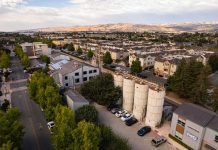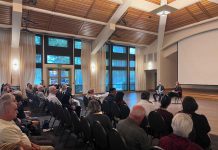Our City Council’s alarm with LAFCO’s response to a city project
considered for 1,200 acres in the southeast part of Morgan Hill
should not be taken likely.
Our City Council’s alarm with LAFCO’s response to a city project considered for 1,200 acres in the southeast part of Morgan Hill should not be taken likely. The agency is giving fair warning that this project is in violation of Santa Clara County policies and likely the city’s own general plan for the preservation of agricultural land and open space.
This is not a project within city limit, it is on county land and we have no quantifiable or justifiable need to annex. There are greater needs within the city limits. There are vacant parcels in the middle of downtown. There is plenty of industrial, commercial and residential land for decades within our existing limits that we do not need to spread, sprawl and violate the principles of smart growth for which this city draws its direction and pride.
For the city to move forward there may need to be a general change in county policy which would put all such county lands bordering other cities at risk. Such a change would be a dangerous precedent. So one of the questions is not just about this project but a policy change that would affect many thousands of acres throughout the county. Morgan Hill has not demonstrated need, only a want. If successful, others could be allowed to do the same. That’s a problem.
So, who wants this? These are difficult economic times. The city has a budget deficit. There is no indication that we will return to the pre-dot-com boom. We cannot provide the services to maintain what we have, let alone that which is needed to support a new 1,200-acre community.
Developers and landowners, who strategically placed themselves on the Urban Limit Line sub-committee some time ago, promoted self interest to extend our city limits at our cost and for their benefit. The committee has disbanded, but the idea of extending the city limits continues.
The scale of this project is amazing. Its footprint will have everlasting consequences that should not be decided by a five-member council. The lack of community information and involvement cannot be an oversight. But, before we spend an additional $500,000 for an EIR to be added to the tens of thousands already spent, let’s put this to a vote. It is important that residents understand the sheer magnitude of this project.
There are direct and indirect costs. It is important that residents fully understand current economic conditions, that we have a multi-million dollar current and predicted future deficits. They need to know, to decide and to approve the likely additional expense for public safety, public works, dispatch, fire, medical, electrical, water, sewer (sewer plant expansion), garbage, streets, lighting, paving, planning, housing, parks, parking, water retention basins and so much more? The community should understand that residential and leisure projects are built as a cost to the city, not as a revenue source or even an offsetting revenue source, i.e. aquatics center, athletic complex.
I would like to know if residents are willing to absorb the additional costs with perhaps new taxes, and property assessments; that they are willing to promote urban sprawl. That they are willing to further strain the city treasury and/or add to its projected deficit. That they are willing to spend an additional $500,000 for an EIR for which another public agency has already said it will not pass under current conditions. That they are willing to absorb the legal cost in defending this project amongst all the environmental organizations yet to come forth that will challenge a project that will increase our carbon footprint. That they are willing to accept reductions in other services as the city acquires new risk and demands. That they are willing to give up the policy of slow and contained growth, a policy that we, as a community, have reaffirmed with an overwhelming and growing majority over the last several decades. That they are willing to trade prime agricultural land for concrete and asphalt, structures for open space, and congestion for access. That they are willing to pursue this project instead of partnering with land trusts and other public and private agencies to purchase agricultural easements in preserving our heritage and reputation. Let’s put this on the ballot because if we decide to go forth with this project it will have an unprecedented affect on our economic, cultural and social future. I believe this city can either be among the best small cities, or be among the very worst by extending our resources beyond our capacity to maintain what we have.
Mark Grzan is a former councilman.







